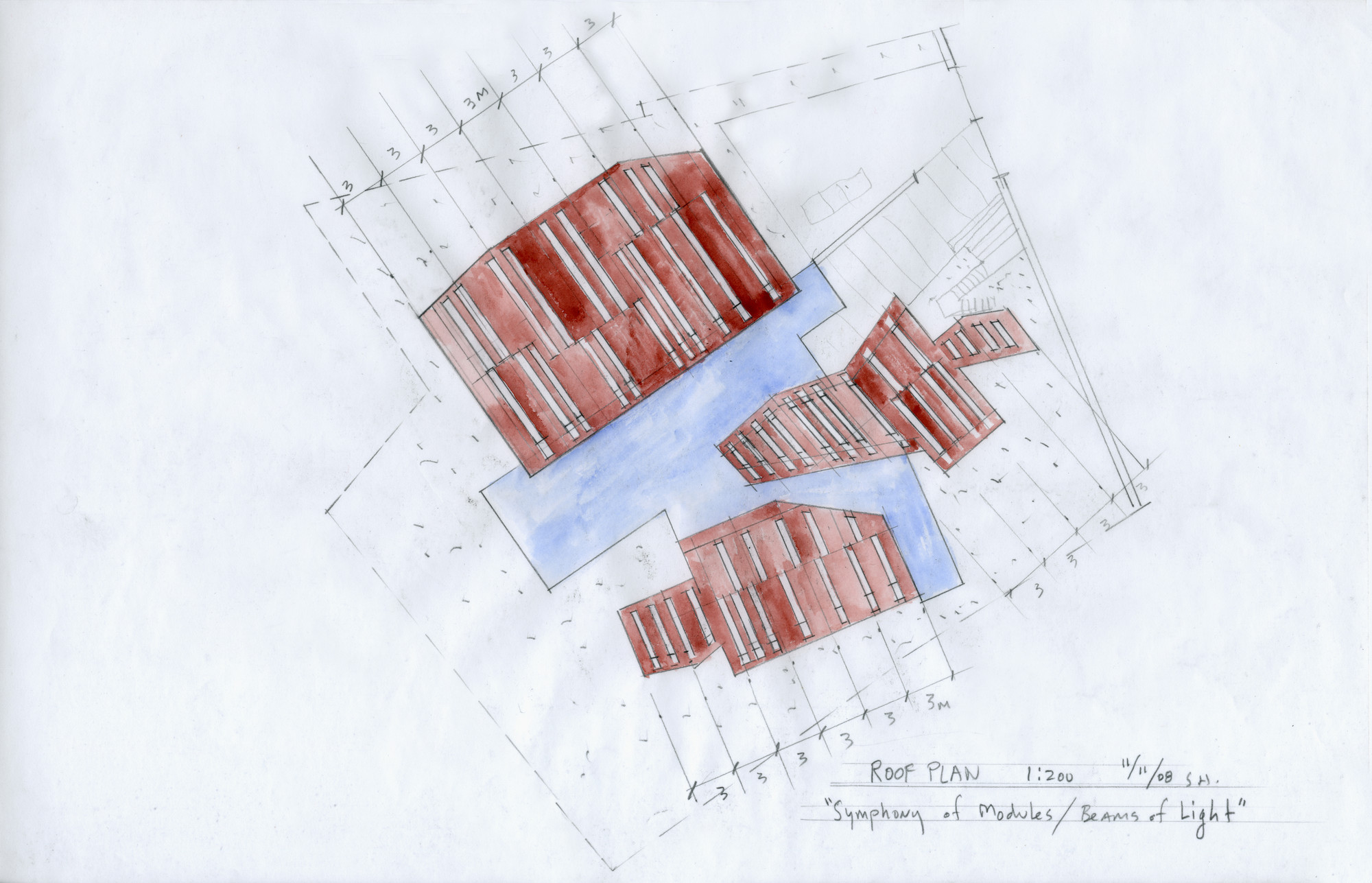David Adjaye is set to release a vinyl record with his brother Peter, a composer and musician with whom David has been formally collaborating for over a decade, reports The Spaces. The record, Dialogues, presents a collection of 10 of Peter's sonic responses to David's architectural projects. "When I see architecture I hear sounds – I respond to the visual. David responds to sound – he creates with a soundtrack in his mind," Peter said of their creative dynamic.
Music: The Latest Architecture and News
David Adjaye and His Brother Fuse Music and Architecture on Upcoming Vinyl Record
What Can Music Videos Teach Us about Architecture?

When it comes to the confluence of music and architecture, maybe the first thing that comes to mind is Goethe's claim that "music is liquid architecture." Goethe, however, was writing before the advent of MTV: music videos have become miniature films, attempting to capture all the tone, undercurrents and context of a particular song and translate them visually. Even better, the way music videos use architecture isn't the same as any documentary or film location; the camera attempts to mimic the way people listen to music by cutting and weaving around, designed for listeners as much as they are designed for viewers. Hence we see protagonists turning to the side, important elements placed away from the center and shots that both explore and disguise spaces in an attempt to fit the songs' acoustics to the setting.
What this means for us is that music videos can relate to architecture and capture its underlying tones in a way that a film might struggle to. For an architect wondering how the public truly understand and interact with a piece of architecture or remember a style, music videos are an untapped goldmine, since every setting location and filming choice show off how our wider culture relates to a building. Read on after the break for seven music videos that tell us a surprising amount about the architecture they feature.
The Chemical Brothers "Go" Brutalist in Paris for Their Latest Music Video
In The Chemical Brothers’ “Go” music video, seven women carrying two poles march through Paris’ Front-de-Seine neighborhood in perfectly synchronized choreography by Michel Gondry. The area is located in the 15th district, beside the Seine river, and is characterized by its Brutalist buildings, the result of an urban project in the 1970s that rehabilitated the former industrial area through the construction of 20 towers nearly 100 meters high.
The buildings were designed by Henri Pottier and Raymond Jules Lopez, and rise around an elevated platform, which features a series of geometric patterns that are best seen from the top of the towers. The video not only highlights several of these buildings, but also integrates the choreography into the remarkable urban setting.
This post was originally written by José Tomás Franco for Plataforma Arquitectura.

Fusing Architecture and Music: Philip Kennicott Describes the Inspiration Behind Steven Holl’s Daeyang Gallery and House

Awarded yesterday with the 2013 Pulitzer Prize for criticism, Philip Kennicott has built an honorable reputation as a art and architecture critic for Washington Post’s Style section. One of his most recent works, Music Holl: A Copper Clad Pavilion in Seoul recounts the inspiration behind Steven Holl’s award-winning Daeyang Gallery and House in Seoul.
Designed as an experiment on “the architectonics of music,” the basic geometry of the Daeyang Gallery and House was inspired by Istvan Anhalt’s 1967 Symphony of Modules - a uniquely transcribed sheet of music found in John Cage’s contemporary music compendium, Notations. Reminiscent of the “blocky and shard-like shapes” of Anhalt’s sketch, Holl’s design features three copper-clad pavilions punctured by a symphony of carefully placed, rectangular skylights that animate the interior with “bars of light”. As Kennicott describes, Holl uses music as a “powerful metaphor for the dynamic unfolding of experience” (captured in this film by Spirit of Space).
Read Kennicott’s Music Holl: A Copper Clad Pavilion in its entirety here on Dwell. Continue after the break to compare Steven Holl's sketch above with Anhalt’s Symphony of Modules.
Diller Scofidio + Renfro Designs Telescopic 'Culture Shed' for New York

The expandable multi-use cultural venue dubbed "Culture Shed" is one of the most radical proposals to come out of New York's Hudson Yards Development Project. Designed by Diller Scofidio + Renfro - the New York-based interdisciplinary practice that played a major role in designing the High Line - in collaboration with the Rockwell Group, this 170,000 square foot cultural center will be located at the south end of the Hudson Yards, with the main entrance located near the conclusion of the High Line at West 30th Street.
More information on the Culture Shed after the break...
Video: Muse - Isolated System by Richard Fenwick
The British band Muse has just released the video clip for the single “Isolated System” from their latest album “The Second Law” alluding to the thermodynamic theory.

